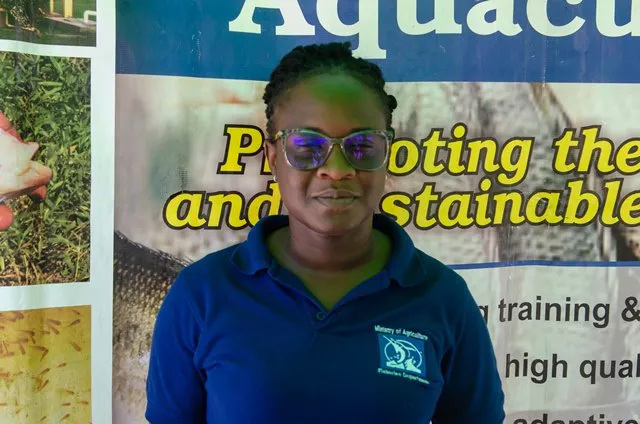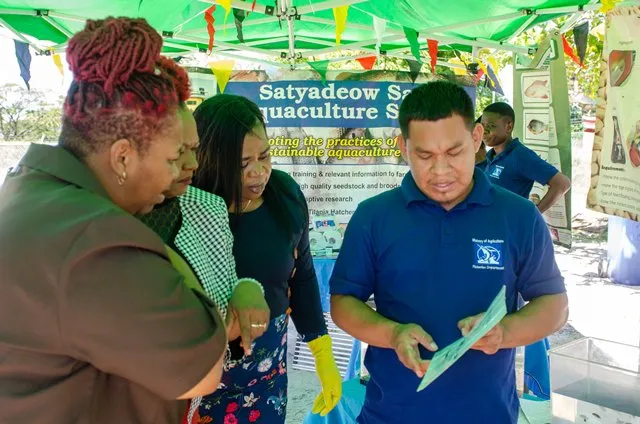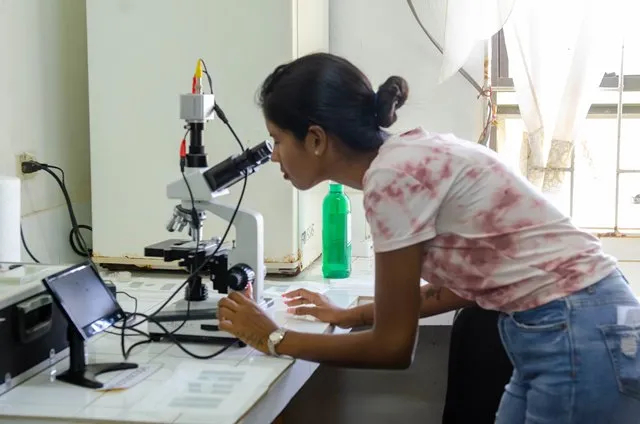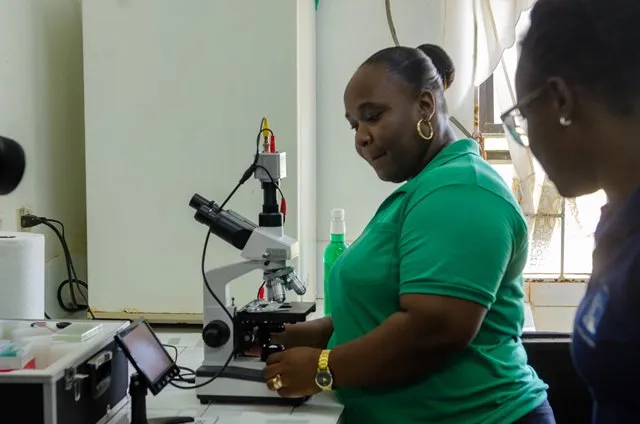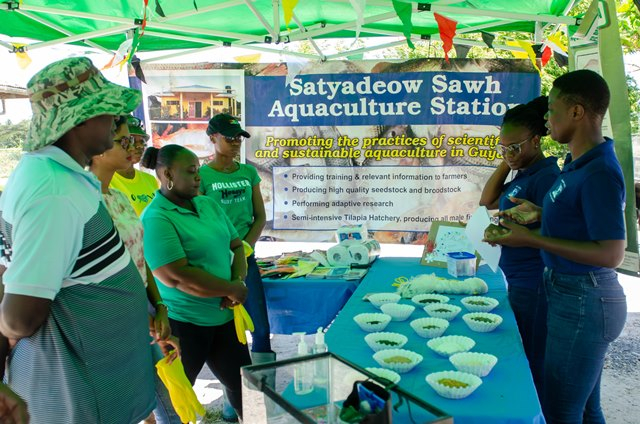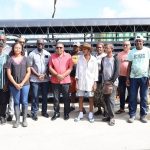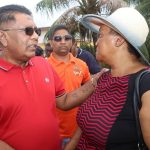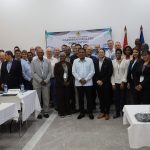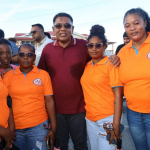Over the past three weeks, 47 teachers from 29 secondary schools across the country have undergone practical training in three key areas of aquaculture to ensure the effective roll out of the programme in secondary schools for the new school year.
The training, conceptualised by the Ministry of Education and facilitated by the Agriculture Ministry’s Fisheries Department, falls under the Caribbean Vocational Qualification (CVQ) Programme.
The CVQ is a regionally accepted qualification equivalent to the Associate and Bachelor’s Degrees, that serves as proof that an individual has demonstrated the essential knowledge, skills and aptitudes within technical occupations.
The training aimed to give teachers hands-on experience in tilapia growth and production, fish handling and processing, and inland aquaculture.
The Supervisor at the Satyadeow Sawh Aquaculture Station, Dr. Neveen Gray, told the Department of Public Information (DPI) during a brief interview on Tuesday provided an overview of the training.
“Some of the important aspects that we would have been working on today and having some experience in would be feeds and feed formulation, the importance of different sizes of feed to different species, various sources of feed materials, as well as how to feed, and what to look for while feeding,” he informed.
Agriculture Officer within the Technical and Vocational Education and Training (TVET) Unit of the Ministry of Education, Yonette Crandon, stated that the programme was birthed due to the demand for skilled workers in the Caribbean.
“We want to roll out [the programme] this year into secondary schools because there is a demand for it. Now, in order for us to roll it out, the teachers must have the requisite skills and knowledge,” she said.
In addition, teachers were also exposed to basic management practices within an aquaculture system, pump operation, species and sex identification, as well as fish anatomy, microorganisms, and life cycles.
Port Kaituma Secondary School in Region One, the Anna Regina, Cotton Field and Charity Secondary Schools in Region Two, Westminster and Patentia Secondary Schools in Region Three, Dolphin Secondary in Region Four, New Amsterdam and Skeldon Line Path Secondary in Region Six, and Three-Mile Secondary School in Region Seven are among the 29 schools benefitting from the initiative.
The CVQ allows students to have both hands-on and theoretical experience so that when they enter the workforce, they can function effectively without the need for further training from employers.
Technical training in the various schools is tailored to the main economic activities in the country. This programme has five levels with each training students in the different levels of work.
Level one is tailored for directly supervised or entry-level workers; Level two for supervised skilled workers; Level three for independent or autonomous skilled workers; Level four for specialised or supervisory workers; and Level five for managerial and/or professional workers.
The programme is one of several initiatives including the Guyana Online Academy of Learning (GOAL) and Get Ready for Opportunities to Work (GROW) scholarship initiatives, which helps to prepare students for life after secondary education and better equip them for the labour force.

